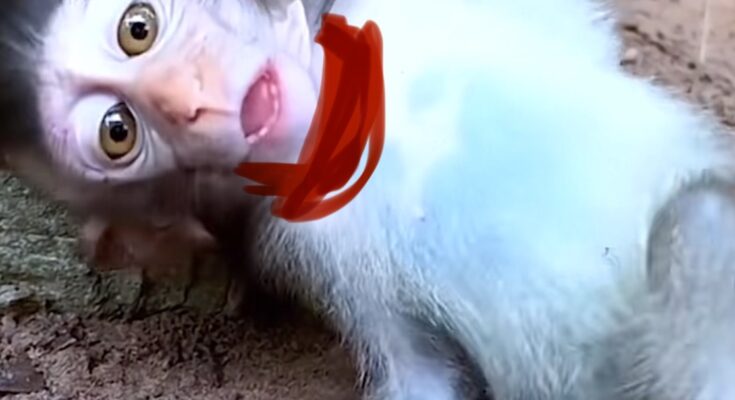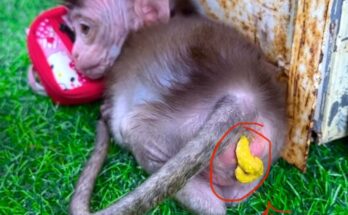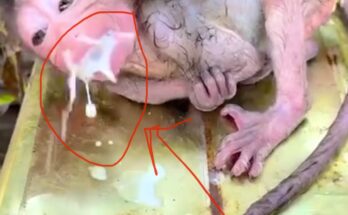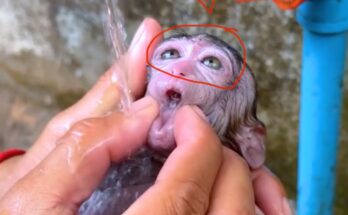In a remote and rusting corner of an abandoned lab, a heartbreaking scene unfolded for years without a single word spoken for justice. A young monkey, once full of life and curiosity, found itself shackled to a cruel fate — its head forcibly affixed to a cold metal pole, its body weakened by starvation, isolation, and neglect.
This is not a fictional tale meant to stir emotions. It’s a disturbing reality that reflects the dark underbelly of animal experimentation, where voiceless creatures suffer in silence for “research” that often lacks compassion, regulation, or necessity.
The Beginning of Captivity
The monkey, whose name will never be known, was taken from the wild or bred in captivity — both equally heartbreaking origins. Like many others, it was reduced to a test subject. In a world where scientific advancement often overshadows ethical consideration, its life became an experiment rather than a living, breathing experience.
Its head was locked in place with a steel fixture — a cruel device used to keep animals still during neurological experiments. Over time, the pole became more than a restraint; it became a symbol of its imprisonment, a physical barrier to freedom, comfort, and any semblance of natural life.
Days Without Food or Compassion
Eyewitness reports and whistleblower footage reveal that the monkey went without food for days. In a sterile room filled with the humming of machines and indifferent hands in lab coats, it cried out for nourishment — not just for food, but for care, touch, and recognition.
Malnourished, weak, and alone, the monkey’s condition worsened. It became a living skeleton, its fur falling out, its eyes dull, and its spirit broken. What began as an experiment became a drawn-out execution by starvation.
A Call for Accountability
This case is not an isolated incident. It’s a symptom of a larger problem — the lack of transparency and humanity in animal testing facilities worldwide. While ethical guidelines exist, enforcement is often lax, and oversight insufficient. Many animals live and die behind closed doors, with their stories untold and their pain unseen.
Advocacy groups have long demanded the end of such outdated and brutal experiments. Alternatives such as computer models, human cell-based testing, and ethical research methods are increasingly available. Yet, old habits die hard in institutions bound by tradition and profit.
Never Again: What We Can Do
This monkey’s suffering must not be in vain. The public needs to be informed. Governments must be pressured to enforce stricter animal welfare laws. Support for organizations fighting against animal cruelty is more vital than ever. And as individuals, we must choose compassion — in the products we buy, the causes we support, and the voices we amplify.
This poor monkey’s life ended in silence, but its story does not have to. We can speak for those who cannot. We can turn pain into progress.



